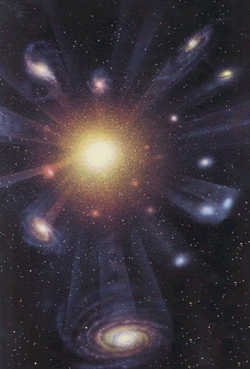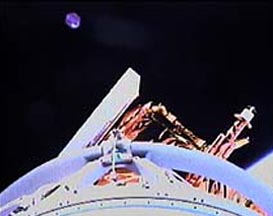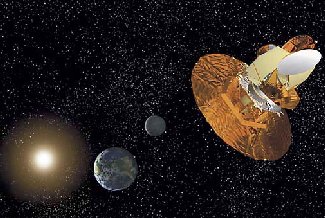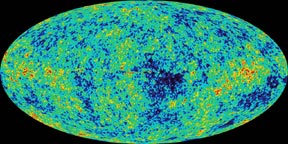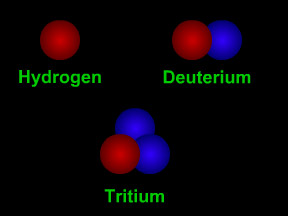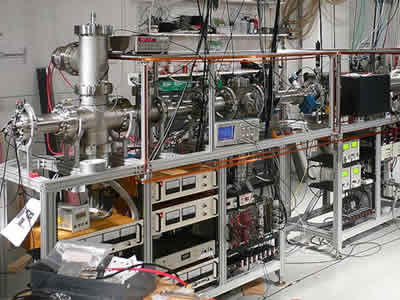Click on image for full size
Windows original.
Related links:
The History of the Universe in 60 Seconds or Less - Dr. Eric Schulman - streaming RealVideo (1 min. 16 sec.) from NSF
Einstein's Messengers - LIGO Documentary - streaming RealVideo (20 min. 12 sec.) from NSF
A Matter of Scale - interactive showing the sizes of things, from very tiny to huge - from NSF
The History of the Universe
The theory that best explains the currently observed state of the universe is the Big Bang theory. This theory states that, in the beginning, the universe was all in one place. All of its matter and energy were squished into an infinitely small point, a singularity. The laws of physics at that instant are not understood at all. But something caused the universe to explode, and thus began the expansion that we witness today.The early universe was small, so everything happened very quickly compared to the timescales on which events happen for the present universe. At the start, the universe was very small, dense, and very hot. This stage was called the primordial fireball. For the first second, only elementary particles, such as protons, neutrons and electrons, could exist. But the universe quickly cooled and expanded. For about the next 500,000 years electromagnetic radiation was the most important thing in the universe and hence this time was known as the radiation era. Once the universe had cooled to the point where the simplest atoms (hydrogen) could form, radiation no longer dominated and matter took over, begining the matter era. The cosmic microwave background radiation was produced at this time, as light that had been trapped by free electrons escaped when the electrons combined with protons to form hydrogen.
So how old is the universe? In principle, that's an easy question to answer. With the rate at which the universe is expanding, called the Hubble constant, astronomers can determine how long ago the universe was at size zero - the age of the universe. In practice, it is not so easy. Despite its name, the Hubble constant is not constant in time. It changes as gravity takes hold of the universe and slows the expansion. How much it changes depends on the density of the universe. To determine this density, astronomers need to measure the distances to very distant galaxies, which is a very difficult task. Although there is much debate over the current age of the universe among astrophysicists, they do agree that it is somewhere between 10 and 20 billion years old, which is still a pretty good estimate in astronomical terms.


